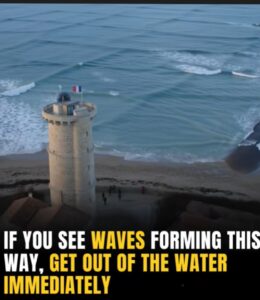If You Spot Square Waves in the Ocean, Leave the Water Immediately

A day at the beach often feels like pure paradise — warm sand between your toes, sunlight dancing on the water, and waves gently brushing the shore. But while the ocean’s beauty is irresistible, it’s important to remember that it can turn dangerous without warning.
Most people know to be cautious of rip currents or shifting tides, but there’s another, lesser-known danger worth recognizing: square waves.
Also called cross seas, square waves appear when two different wave systems intersect at an angle, creating a mesmerizing checkerboard pattern on the surface. It’s a rare and beautiful phenomenon — but one you should admire from land, not from the water.
The European Space Agency explained back in 2010 that these conditions occur when a wind sea and a swell, or two separate swells, collide. A 2004 study found that a significant number of ship accidents happened in such crossing sea states, underscoring their risk.
While they don’t happen often, square waves are sometimes seen close to shore — such as along France’s Île de Ré — where tourists gather to watch them safely from viewpoints. Out on the water, however, they can produce waves up to 10 feet high and unpredictable shifts in wind and current, making navigation and swimming extremely hazardous.
If you ever spot this grid-like pattern forming, resist the urge to wade in or take a boat ride. Instead, enjoy the view from the safety of the sand until the sea returns to normal.
What if you’re caught in a square wave?
In the water, you might not immediately recognize the pattern, but you’ll feel it — two opposing currents pushing against you, forcing you to swim in conflicting directions. The safest approach is prevention: avoid swimming too far out, and if the waves start growing and becoming harder to manage, head for shore immediately.
The ocean is breathtaking, but respect for its power is the key to staying safe.